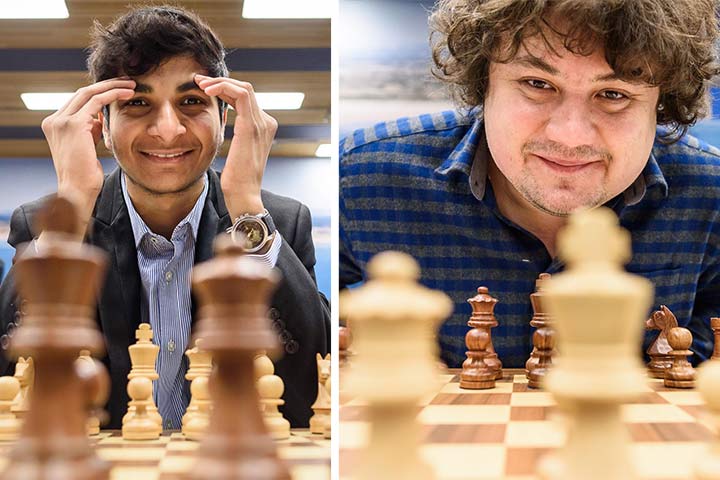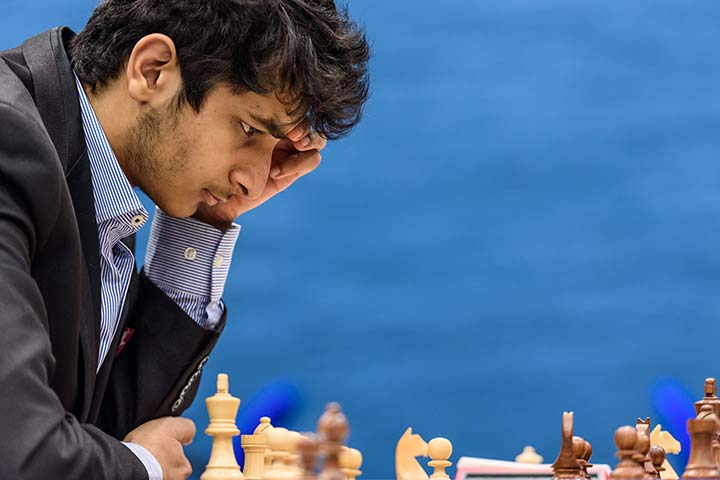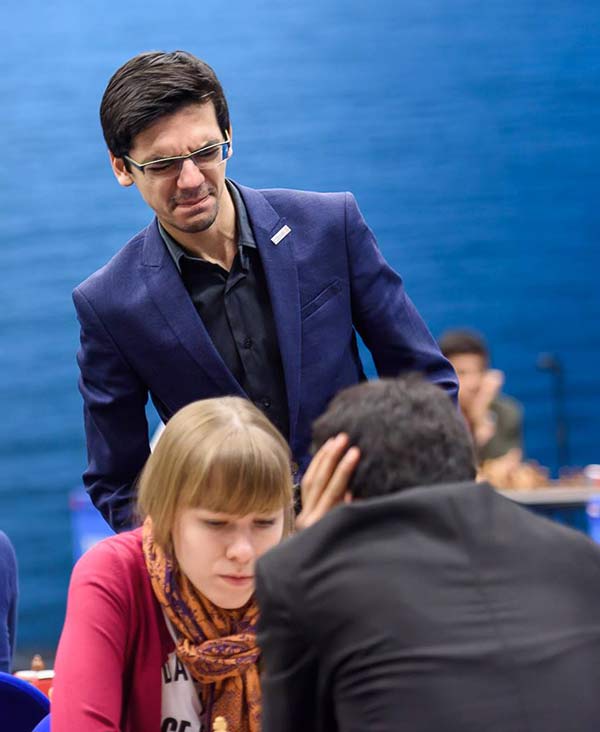


Tata Steel Chess is a marathon, not a sprint, and it's a bit unusual to have the lead change hands so seldom. This year two players have maintained their grip on the top spots since round three: Vidit Gujrathi and Anton Korobov.
The pair both had very strong starts, with 3½ from their first four games, and have essentially remained neck and neck ever since. Vidit is undefeated, and Korobov just dropped a single point to Bassem Amin (annotated below), but his four game winning streak from rounds three to six made up for it.
However, in Saturday's round twelve, Vidit won with black while Korobov drew with white, so the latter will be looking for a win in the final round, since Vidit will have white with a half point lead.
Let's take a closer look at the two dominant players.
Twenty-three years old, Vidit was born in Nashik, India in the western region of Maharashtra. Ten years ago he became the first Indian player to win the World Under-14 Championship in Vietnam. He earned the Grandmaster title in 2013, and became the fourth Indian player to cross the 2700 Elo mark in September, 2017. He told ChessBase India that he was "relieved" after being in the high 2600s all year.
In Wijk aan Zee, Vidit is making his first appearance, but he came in as the top seed, with high expectations.

Poised for a win | Photo: Alina l'Ami © 2018 Tata Steel
Korobov is a former 2700 player (peak rating of 2723 in 2014), and two-time Ukrainian Champion. He has won the prestigious Aeroflot Open (2012), and twice the Poikovsky Karpov round-robin tournament (2015 and 2016). His big splash on the international stage came in the 2013 World Cup in Tromso, Norway, where he advanced all the way to the fifth round, beating Hikaru Nakamura, and only losing to the eventual winner, Vladimir Kramnik.
"I'm quite an experienced chess player. Maybe I can be called a veteran."
Korobov shows his sense of humor in round six, when he said that he can't be considered in shape because he is "too fat and too old." His performance rating in the Challengers after six rounds was a staggering 3001, before slowing down the second half.
"I am bery cold blooded. I can wait."
But his momentum was stopped in round eight, when he lost to another Wijk debutant, Bassem Amin.
The two leaders met each other in a highly anticipated round eleven. They played a full game, but ultimately split the point, in a Sicilian with 3.Bb5+ that never strayed far from the flatline.

Korobov, dominant in the first half | Photo: Alina l'Ami © 2018 Tata Steel
The tournament's top seed showed his mettle in today's round twelve, busting out a sharp Leningrad Dutch, to ensure an unbalanced game against tail-ender Olga Girya. He could well expect that Korobov, with white against a much lower rated IM Lucas van Foreest would manage to win, but as luck would have it, Korobov never got a foothold in his game, which liquidated to a drawn endgame.

Giri watching Girya vs Vidit, seems to feel her pain | Photo: Alina l'Ami © 2018 Tata Steel
After this clutch win from Vidit, the pressure is on Korobov to go for broke with black in the final round, to have any chance at the coveted spot in next year's Masters. It's unlikely that Vidit will lose with white given how well he is playing, but should they end up tied, the winner will be decided on the player's Sonneborn-Berger score — the second tiebreak criteria, since their direct encounter was drawn.